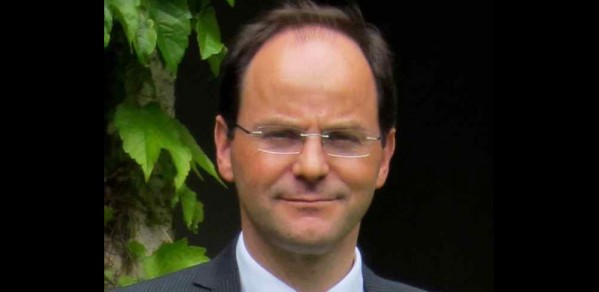
Professor Roberto Cipolla has been elected a Fellow of The International Association for Pattern Recognition (IAPR) for contributions to computer vision. In particular for his substantive and sustained contributions for the reconstruction, registration and recognition of three-dimensional (3D) objects from images and their translation into novel commercial applications.
All the work from Cipolla’s lab combines the best characteristics of great research: taking hard problems, and creating compelling solutions which display mathematical elegance, great depth of understanding, and strong practical engineering.
Dr Andrew Fitzgibbon, Partner Researcher at Microsoft
Dr Andrew Fitzgibbon writes about Professor Cipolla's distinguished career to date:
Roberto Cipolla studied undergraduate engineering at the University of Cambridge and then went to the University of Pennsylvania where his Master’s thesis (1985) was on radar signal processing. A love of the films of Akira Kurosawa, and the dream of what was then called “5th Generation” robotics took him to Japan, to the famous Electrotechnical Laboratory (ETL). There he met some of the greats of computer vision: Ikeuchi, Kanade, Asada. They were doing pioneering work in 3D vision, and Cipolla immediately saw the potential to apply that work to the difficult problem of analysing human motion, the subject of a further MEng.
For his PhD, the ETL’s greats had heard that Brady, and then Blake, were soon to arrive in Oxford, and it was at the University of Oxford that Cipolla completed his PhD in 1991 on 3D reconstruction from smooth 2D contours, an immensely difficult problem to which he has contributed much of the seminal work, including the excellent monograph with Peter Giblin, “Visual Motion of Curves and Surfaces”.
From 1991-92 Cipolla was a Toshiba Fellow and engineer at the Toshiba Corporation Research and Development Centre in Kawasaki, Japan.
Starting as a lecturer at the Department of Engineering at Cambridge in 1992, Cipolla immediately became recognised for the quality of the work he was doing. A stream of excellent papers came from this new research group.
The range of topics was impressive: Multiple-view geometry; Model-based tracking; Reconstruction and recogntion of architecture; Object recognition; and analysis of images of humans. From face recognition to hand tracking to 3D body modelling, members of his group were involved in the early pioneering work on human body tracking for Kinect for Xbox 360.
All the work from Cipolla’s lab combines the best characteristics of great research: taking hard problems, and creating compelling solutions which display mathematical elegance, great depth of understanding, and strong practical engineering. He always has an amazing new demo to show on his laptop or phone, and is full of excitement both at the theoretical advances that it embodies and the real-world benefits it can bring.
Of the thirty or so PhD students he has graduated since he began at Cambridge, many are now academics at major institutions across the world, and many of the remainder are among the most highly regarded industrial academics in computer vision. This mentoring of PhDs continues with his highly regarded International Computer Vision Summer School held in Sicily every year, which he founded in 2006, and currently directs. A place at the school is highly prized, not least because of the stellar field of international experts Cipolla brings together every year.
In parallel, his continuing interest in Japan (including a year-long visit to Toshiba just after his PhD) led to the founding in 2006 of the computer vision group at Toshiba’s Cambridge Research Laboratory, and in 2007 he was appointed Lab Director. Real-world applications also underpin the spinout companies that have emerged from his lab. To name just a few: Metail (and more recently Trya) for 3D body modelling and virtual fitting; Zappar the world’s leading Augmented Reality platform and creative studio and Wayve for autonomous mobility services which learn to drive with end-to-end deep learning.
He has received many recognitions for his work: at the Department of Engineering he became a Reader in Information Engineering in 1997 and a Professor in 2000. He is also Professor of Computer Vision at the Royal Academy of Arts, London (since 2004). In 2010 he was elected a Fellow of the Royal Academy of Engineering and in 2013 Distinguished Fellow of The British Machine Vision Association (BMVA).

